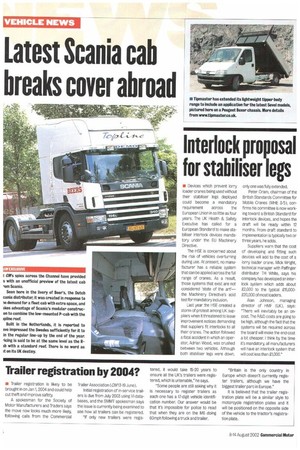Interlock proposal for stabiliser legs
Page 14

If you've noticed an error in this article please click here to report it so we can fix it.
• Devices which prevent lorry loader cranes being used without their stabiliser legs deployed could become a mandatory requirement across the European Union in as little as four years. The UK Hearth 84, Safety Executive has called for a European Standard to make stabiliser interlock devices mandatory under the EU Machinery Directive.
The HSE is concerned about the risk of vehicles overturning during use. At present, no manufacturer has a reliable system that can be applied across the full range of cranes. As a resutt, Those systems that exist are not considered 'state of the art'— the Machinery Directive's add test for mandatory inclusion.
Last year the HSE created a storm of protest among UK suppliers when it threatened to issue improvement notices demanding that suppliers fit interlocks to all their cranes. The action followed a fatal accident in which an operator, Adrian Wood, was crushed between two vehicles. Although both stabiliser legs were down, only one was fully extended.
Peter Dram, chairman of the British Standards Committee for Mobile Cranes (MHE 3/5), confirms his committee is now working toward a British Standard for interlock devices, and hopes the draft will be ready within 12 months. From draft standard to implementation is typically two or three years, he adds.
Suppliers warn that the cost of developing and fitting such devices will add to the cost of a lorry loader crane. Mick Wright, technical manager with Patfinger distributor TH White, says his company has developed an interlock system which adds about £2,000 to the typical £15,000£20,000 of most loaders.
Alan Johnson, managing director of HMF (UK), says: "There will inevitably be an oncost. The R&D costs are going to be high, although the fact that the systems will be required across the board will make the end-cost a bit cheaper. I think by the time it's mandatory, all manufacturers will have an interlock system that will cost less than £1,000."
















































































































































